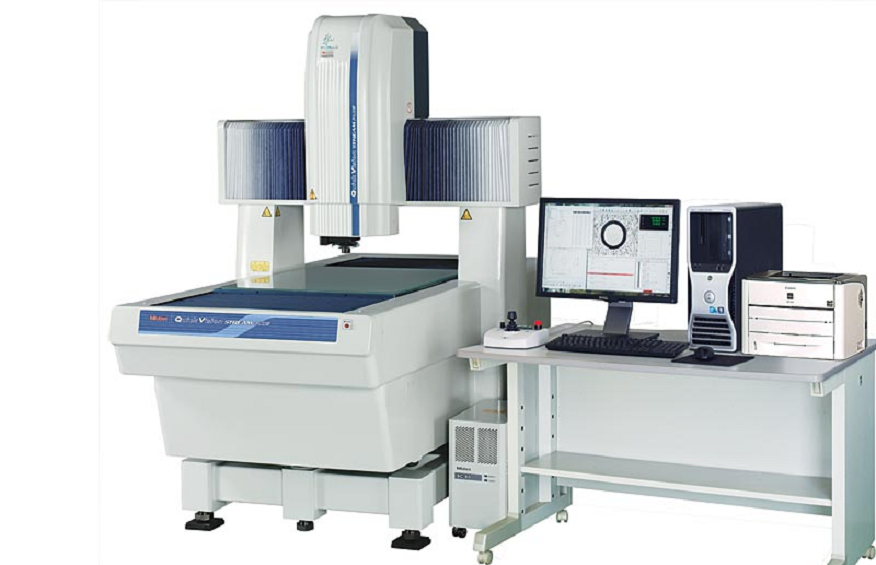Are you in need of high-performance optical measurement instruments? Do you wantto execute light analysis applications? Do you know the working mechanism of optical instruments? What are the various applications of optical instruments in the world today?
Optical measurement instruments.
What is optics? It is a branch of physics that deals with the study of visible light and its interaction with matter. Optical instruments will process light waves to enhance a clear view of the image. Optical measurement instruments have a significant impact on the aerospace, plastic, automotive, and medical industry. Various light sources are used in this form of non-contact measurements. A detector, lens, and light source are required. Edge detection is calculated using a computer or a point of reference. This type ofmeasurement is fast and measures features that are too fragileor small to measure by touch.
The human eye is the most popular optical instrument. It canconvertelectromagnetic waves of visible light into neural impulses whichare evaluated in thevisualcortex of the brain. This gives humans the abilityto visual perception. If the refractive index and curvature radius change, the focal distance varies and the beam of light is focused leading to object magnification. This principle is used in microscopes, telescopes, binoculars, and magnifying glasses. Most of these instruments are passive devices meaning an external light source is required during measuring.
Optical instruments working mechanism.
1. Active optical instruments.
Toperform various tasks, this instrument uses its light source. Bundled electromagnetic waves are transmitted, and the emerging echo due to the reflection on surfaces and objectsis received. optical instruments send visible electromagnetic impulses. To enable object imagery, acute distance measurements are performed through the relation of light velocity and signal propagation time.
2. Passive optical instruments.
Optic lenses are components that have translucent glasses which have two refractive surfaces. The convex and concave surface curvature makes the refraction of light possible. Depending on the lens implementation, the object viewed through a lens can be minimized or magnified. The determining factors for the spectacle lens classificationinclude reciprocal value, focal distance, and refraction index. To accommodate an object’s optic image size, the focal distances of the lens are varied.
Types of optical instruments.
Multiple optical lenses are used in devices such as telescopes and microscopes to create images. Each lens forms an object’s image when multiple lenses are used. The first lens creates an image of the original object. The first image isthe object for the second lens. The applications of optical instruments include the following:
3. The human eye.
It is an optical device that makes it possible to see objects around us. The eye can focus on far and near objects. The corneais a two-lens system that does the focusing. The retina deals with light detection. Cutting down visible light is the function of the iris. The amount of light that enters the human eye is controlled by the iris. When there is bright light present, the iris contracts. When it is dark, the iris expands. Ciliary muscles control the lens. The incoming ray enters the cornea and reaches the retina. The retina captures the imageand sent it to the brain to form electric signals. To focus on a single point or read a book, a fovea is a source of sharp central vision.
Due to distance, far-away objects appear small. For a telescope to view distant objects, at least two lenses are needed. A diminished image nearer to the focal point is formed on the first lens. It is designed in such a way that the first lens forms an inverted and real image thatis closer to the second lens than its focal length. A virtual and enlarged image is formed with the help ofmagnifying glass. Concerning the object, the final image is then inverted. The third lens makes it possible to obtain straight images while observing objects on Earth.
There are various shapes, sizes, and capabilities of microscopes. The types of microscopes include light microscopes, compound microscopes, digital microscopes, stereomicroscopes, and pocket microscopes. Microscopesare used to view small objects like examining microorganisms and cells. It has two simple magnifying lenses that are placed at a specific distance apart and the distance from the observer’s eye is set. Higher magnification is achieved when two converging lenses are used. When the light illuminates the sample, an image is created on the first lens. The second lens magnifies the formed image, then the user’s eye makes an observation.
4. Magnifying glass.
A virtual image of an object is produced and enlarged using the converging lenses of a magnifying glass. A blurry image is formed if the object is placed closer to the eye.
It is a popular optical instrument used to capture videos and images. Light passes and enters the camera through an opening called an aperture. A reduced real image is formed when light passes through the lens. The lens of the camera can be adjusted forward or backward to bring the image into focus. The shutter controls the amount of light that strikes the sensor. The different types of the camera haveunique advantages and features. Videos andimages are captured in different formats such as PNG, JPEG, and RAW. Digital cameras are relatively affordable and convenient.
The wavelength of light is measured using a spectrometer. Light is split into its component color then the time taken for each color to return to its original state is measured. For light wavelength calculation, this information is essential.
5. Optical fibers.
Pictures and sounds encoded with laser lights are sent through optical fibers. All the lights are reflected off of inside the fiber hence there is no chance of light escaping. The light signal will remain strong even at long distances. Fibers are used mostly in internet signals, cable television, and telephone.
These devices focusbeams of visible light with one color and wavelength. The troughs and crests of the waves are lined up since the waves of the laser light are synchronous.
Conclusion.
For technology or science-related projects, optical instruments are essential. Optical instruments are required to make accurate and precise measurements. To achieve results within a relatively short period, you will need the right optical instrument. The various optical instrumenttypes include the human eye, telescope, microscope, camera, magnifying glass, and spectrometer.

